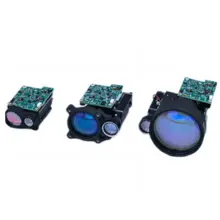Thermal IR vs. IR: Understanding the Key Differences

In the realm of infrared technology, understanding the nuances between Thermal IR and traditional IR is crucial. These two forms of IR share similarities but also possess distinct characteristics that determine their applications and effectiveness. In this article, we delve into the essential disparities between Thermal Infrared and Infrared, shedding light on their functionalities, applications, and key differences.
What is Infrared (IR)?
Infrared (IR) technology operates beyond the visible spectrum, utilizing electromagnetic radiation with longer wavelengths than those of visible light. It encompasses a wide range of applications, from remote controls to medical imaging devices. IR technology is versatile, finding use in various industries and consumer products.
Understanding Thermal Infrared (Thermal IR)
Thermal Infrared, commonly known as Thermal Infrared, differs from traditional IR in its sensing mechanism and wavelength range. Unlike traditional IR, which relies on electronic sensors to detect infrared radiation, Thermal IR operates based on the heat emitted by objects. This unique characteristic allows Thermal Infrared to capture thermal signatures and detect temperature variations, making it invaluable in applications such as night vision, thermal imaging, and detecting heat leaks in buildings. Extended Reading: 3 Minutes to Know How Does Thermal Imaging Work

Key Differences Between Thermal IR and IR
1. Sensing Mechanism: Traditional IR relies on electronic sensors to detect infrared radiation, while Thermal IR detects heat emitted by objects.
2. Wavelength Range: Traditional Infrared typically operates in the near-infrared spectrum, while Thermal Infrared covers the mid to far-infrared range.
3. Applications and Use Cases: Traditional IR is commonly used in applications like remote controls, security systems, and communication devices, whereas Thermal IR finds applications in thermal imaging, night vision, and industrial processes requiring temperature monitoring.
4. Equipment and Technology: The equipment used for Thermal IR differs from traditional IR, with specialized thermal cameras and sensors designed to capture thermal signatures.

Applications and Industries Utilizing Thermal IR and IR
1. Security and Surveillance: Both Thermal IR and traditional IR play crucial roles in security and surveillance systems. While traditional IR cameras are effective for daytime surveillance, Thermal Infrared cameras excel in low-light conditions, providing clear images even in complete darkness.
2. Medical Imaging: Thermal IR technology is utilized in medical imaging for diagnosing conditions such as inflammation, circulation problems, and cancer detection. Traditional IR is also used in medical applications, such as monitoring body temperature and detecting abnormalities.

3. Environmental Monitoring: Thermal IR technology is employed in environmental monitoring to assess temperature variations, detect wildfires, and monitor volcanic activity. Traditional IR sensors are utilized in weather forecasting and studying atmospheric conditions.
4. Manufacturing and Industrial Processes: Thermal IR plays a crucial role in manufacturing and industrial processes, enabling non-contact temperature measurement, quality control, and predictive maintenance. Traditional IR sensors are utilized in automation, machine vision systems, and process monitoring.

Future Trends and Developments
As technology continues to advance, we can expect further innovations in both Thermal IR and traditional IR. Emerging technologies such as hyperspectral imaging and enhanced sensor technologies hold the potential to revolutionize various industries, offering higher resolution, improved accuracy, and enhanced capabilities.
Understanding the key differences between Thermal IR and traditional IR is essential for selecting the appropriate technology for specific applications. While traditional IR offers versatility and cost-effectiveness, Thermal Infrared excels in capturing thermal signatures and detecting temperature variations. By leveraging the strengths of each technology, industries can enhance efficiency, improve safety, and unlock new possibilities for innovation.

















